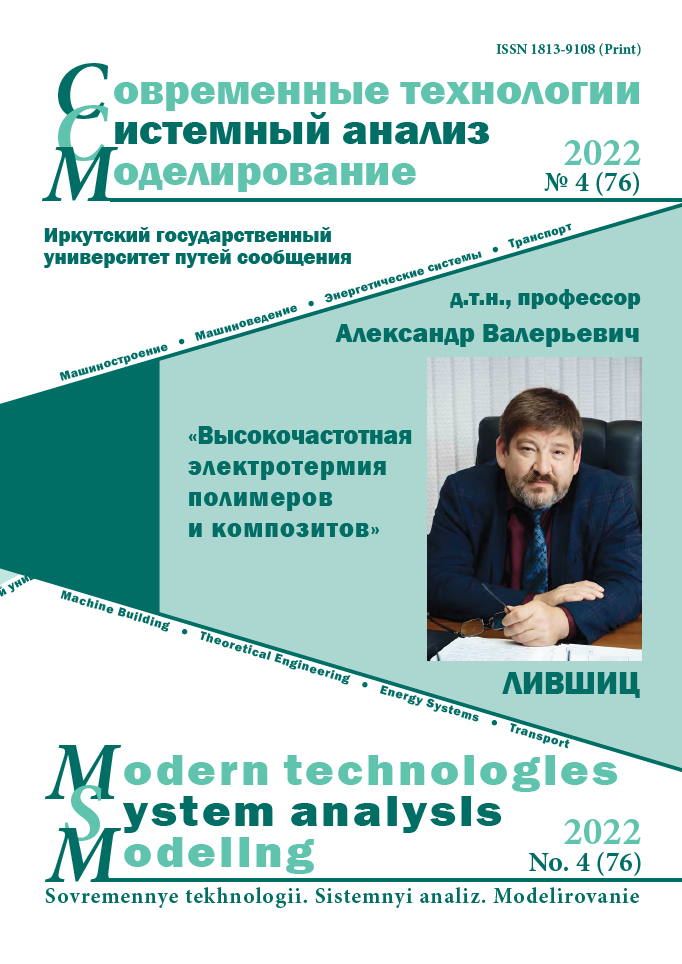Results of experimental investigation of the electrohydroimpulse method for crushing reinforced concrete scrap waste from dismantled contact network supports of railway overhead line
Keywords:
reinforced concrete scrap waste, green recycling technologies, electrohydroimpulse crushing technology, resource conservation, energy efficiencyAbstract
To envolve the reinforced concrete V class hazard waste generated after dismantling reinforced concrete posts for railway infrastructure (overhead line posts) geographically distributed over considerable distances it is proposed to identify the best available «green technology» for recycling having high technical, economic, operational and sanitary parameters and allowing to obtain recyclable materials close to the places of waste generation and accumulation, which will eliminate costly transportation, processing and disposal of waste. Experimental investigation of the electrohydroimpulse method of crushing reinforced concrete railway overhead line posts made from heavy-weight class B40 concrete have been carried out. Design, technical and operational parameters of the experimental sample of the crushing complex are high mobility, compactness, light weight, low energy consumption, dust-free operation, high quality of the obtained recyclable materials, ease of management, maintenance and transportation. Experimental investigation of the electrohydroimpulse method of crushing has shown high technical, operational and economical parameters to ensure a promising opportunity of implementing the technology of recycling reinforced concrete waste into recyclable materials that meets the criteria of the best available technology in environmental protection. The development of technology to the level of pilot operation in the structural divisions of the electric power complex of railway transport will allow to achieve the target indicator of the Long-term Development Program of JSC «Russian Railways» until 2025 of raising the level of environmental safety in terms of increasing the share of neutralization and involvement of the waste production and consumption in secondary circulation in the total amount of its formation, as well as accelerate the provision of technological sovereignty of Russia.
References
Каталог отходов производства и потребления холдинга «РЖД» : утв. Департаментом охраны труда, промышленной безопасности и экологического контроля ОАО «РЖД» от 12.12.2018. М. : ОАО «РЖД», 2018. 156 с.
Об отходах производства и потребления : Федер. закон № 89-ФЗ от 24.06.1998 г. (в ред. 14.07.2022) // КонсультантПлюс : сайт. Доступ из справ.-прав. системы «КонсультантПлюс» в локальной сети.
Стратегия экологической безопасности Российской Федерации до 2025 года : указ Президента № 176 от 19.04.2017 г. URL: http://www.kremlin.ru/acts/bank/41879 (Дата обращения: 13.10.2022).
Рекомендации по технологии разрушения некондиционных бетонных и железобетонных изделий механическим способом. М. : НИИЖБ Госстроя СССР, 1984. 9 с.
Рекомендации по применению продуктов переработки некондиционных бетонных и железобетонных изделий. М. : НИИЖБ Госстроя СССР, 1984. 10 с.
Рекомендации по переработке и использованию отходов предприятий сборного железобетона. М. : НИИЖБ Госстроя СССР, 1987. 18 с.
Трамбовецкий В.П. Повторное использование дробленого бетона // Бетон и железобетон. 2004. № 4. С. 24–26.
Кальгин А.А., Фахратов М.А., Сохряков В.И. Опыт использования отходов бетона в производстве бетонных и железобетонных изделий // Строительные материалы. 2010. № 6. С. 32–33.
Гусев Б.В., Загурский В.А. Вторичное использование бетонов. М. : Стройиздат, 1988. 96 с.
Юткин Л.А. Электрогидравлический эффект и его применение в промышленности. Л. : Машиностроение, 1986. 253 с.
Ким К.К., Костроминов А.А., Колосовская Н.А. Утилизация железобетонных опор контактной сети // Железнодорожный транспорт. 2006. № 10. С. 70–71.
Application of pulsed HV discharges to material fragmentation and recycling / H. Bluhm, W. Frey, H. Giese et al. // IEEE Transactions on Dielectrics and Electrical Insulation. 2000. Vol. 7 (5). Pp. 625–636.
Controlled disintegration of rein-forced concrete blocks based on wave and fracture dynamics / Koji Uenishi, Naoyuki Shigeno, Shintaro Sakaguchi et al. // Procedia Structural Integrity. 2016. Vol. 2. Pp. 350–357.
Xiaodong Wang, Jiaxu Du, Ningjing Li. Research on Crushing Concrete Members by High-Voltage Pulse Discharge Technology // Advances in Civil Engineering. 2021. DOI 10.1155/2021/5511959 URL: https://www.hindawi.com/journals/ace/2021/5511959/ (Дата обращения: 17.11.2021).
Оборудование и технологические процессы с использованием электрогидравлического эффекта / Г.А. Гулый, П.П Малюшевский, Е.В. Кривицкий и др. М. : Машиностроение, 1977. 320 с.
Гулый Г.А., Малюшевский П.П. Высоковольтный электрический разряд в силовых импульсных системах. Киев : Наук. думка, 1977. 208 с.
Малюшевский П.П. Основы разрядно-импульсной технологии. Киев : Наук. думка, 1983. 272 с.
Гулый Г.А. Научные основы разрядно-импульсных технологий. Киев : Наук. думка, 1990. 208 с.


